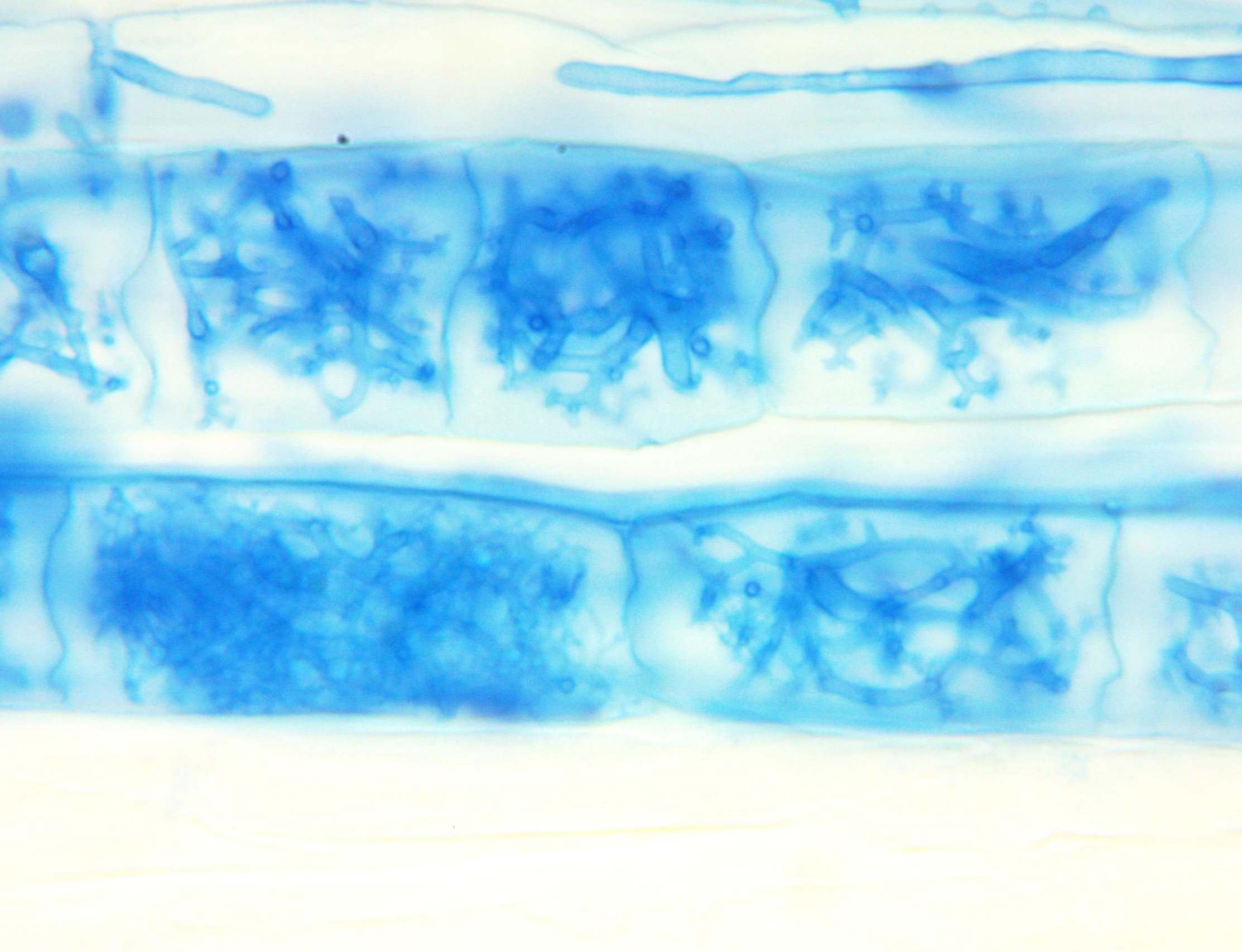Mycorrhizae
Mycorrhizae are ancient an symbiosis between plants and fungi at least 400 million years old and globally in an estimated 70% of all land plants. In this symbiosis plants trade photosynthetically derived carbon from the atmosphere for nutrients and water the fungi access in the soil. Tubes of mycelium form forests under our feets that are the sticky web holding soil together. In other words, fungal networks when interacting with a plant are living carbon vacuums that can help fight climate change. What can we learn from these ancient lifeforms and their success stories.
Microbiomes
Thinking with a microbe-centric lens gives insight into how complex biologcal networks can help us restore land and grow food. Bacteria and fungi living in the soil and on plants are ecosystem engineers. These organisms cooperate and conflict like we do but their interactions shape evolution and ecosystems much more rapidly. Symbiotic interactions between microbiome members and with their hosts have control over plant health as well as global carbon, phosphorus, and nitrogen cycles. These cycles govern life on earth.
Mapping
A critical step for biodiversity conservation is to know where things are and why. Machine-learning algorithms allow me and my collaborators to map underground biodiversity at high spatial resolutions. We do this by leverging dozens to hundreds of layers of data from satellites, models, and DNA sequencing technologies. Future climate models allow us to predict how underground ecosystems will move in the near future. Understanding the biogeography of microbial networks is a first step to identfying where we need to protect the underground. Modeling
Statistical and machine learning models are important for understanding relationships and future prediction. Being comfortable with big data allows me to focus on the question more than the method. Quantifing uncertainty propogation in a model is a current focus as well. In particular I employ algorithms that help us find general trends and then zoom into specifics of a story. These models include probabilistic, linear, and ensamble approaches to find biologically relevent patterns in oceans of noise.
Image Analysis
Images hold vast amounts of information waiting to be extracted be it from a satellite or a camera. From these images global ecological and evolutionary hypothesises can be tested. Likewise it allows us to directly examine underground networks, such as the architectrue of a root system. These images are then combined with models and mathematics to extract traits and patterns for understanding eco-evo trajectories and dynamics.
Climate Action
With the affects of Climate Change more apparent each year, the scientific community cannot just keep publishing. To this effort I am working with the Society for the Protection of Underground Networks to find and preserve soil biodiversity across the globe.





